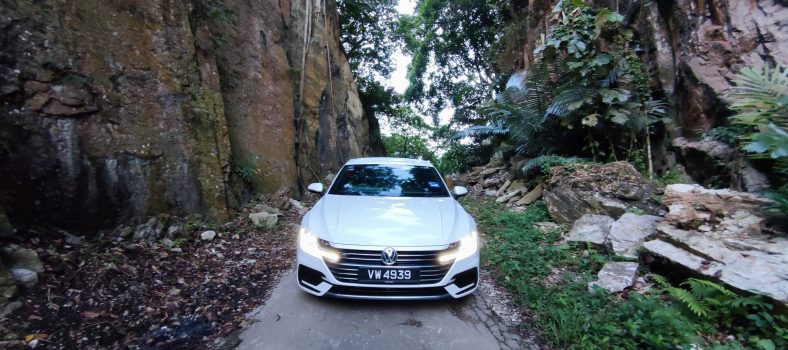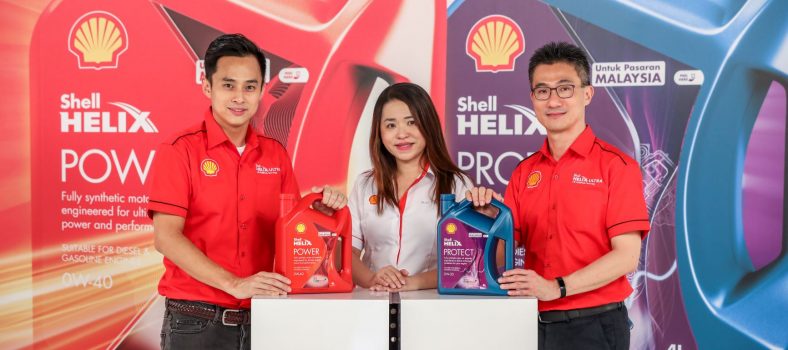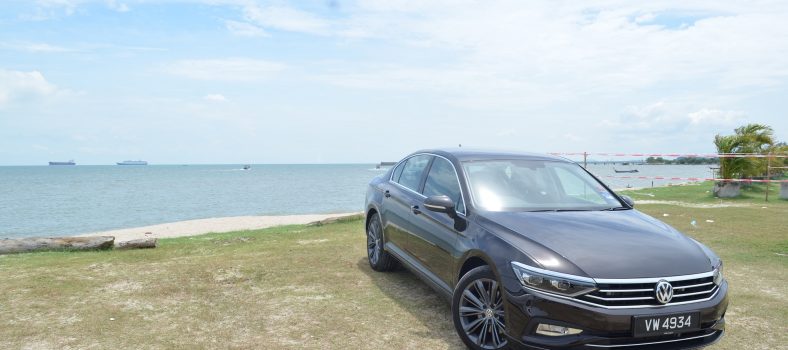Today provided a virgin experience for me in all my years of driving; I get to drive a car that runs on electricity only for the first time in his 15 years of driving. Could this be the prelude to a wave of electric cars for Malaysians? No one knows.
As it is, Nissan is allowing the public to test drive its latest EV called the Leaf in a public awareness campaign to introduce a different propulsion system other than a conventional petrol-driven combustion engine, gather market intelligence about public perception on the EV (and more importantly how much the people are willing to pay for an EV) and from the good turnout (hopefully), lobby for greater support from the government in promoting its use. The test drives can only be found in Nissan flagship showroom in PJ and it’ll only be from 5th to 6th May, after which the only other way for you to test drive it (at this time of writing) is to be selected as the Leaf Ambassador where Nissan loans you a Leaf for a period of 6 weeks if you can convince them in writing or video on the merits of you possessing the car (there are other terms & conditions involved so read out more in their main website)
Yours truly arrived at around 9.40am this morning and I had to wait for my turn, which gave me time to check out the car.
Design
Personally, I find the design to be refreshing and cutesy. The Leaf is 4,445mm in length, 1,770mm in width and 1,545mm in height (so compared to a Myvi, this car is almost 1 meter longer, about 10cm fatter and almost just as tall). This 2,700mm in wheelbase (that’s the same as the Honda Civic) so rear legroom is good
The sharp angles of the front headlights reminds me of the Nissan crossover, the Juke …. although this one sits very close to the ground.
Performance
The interesting thing about the Leaf is Nissan designed the electric motor to resemble a conventional combustion engine. Don’t be fooled, this car does not need even an ounce of petrol to move. A high-response synchronous AC motor with 107PS worth of horsepower and 280Nm torque (that’s the same torque numbers as a Golf GTi, mind you) moves this car from zero to 100kph in less than 11 seconds …. but drag racing is not what you want to do with this car. What matters most is acceleration when joining traffic on highways and the Leaf puts you at 60kph in 5 seconds so it’ll be fun surprising some hot hatches at the traffic lights. Top speed is rated to be “over 140kph”.
The Leaf has 2 “mouths”
Use the one on the left (the one with the black cap) for a 30 minute/ 80% charge quickie. Doing this regularly however may lessen battery life so use it only if you’ve got an early morning meeting and you woke up late, forgetting to charge your car over night. Telling your boss that you’re taking an emergency half day leave just to charge your car sounds kinda odd. Also, to make the quickie work, you’ve got to insert the right charger. And these chargers were not present in the launch so didn’t get a chance to see it.
If you’re just like the rest of us, you’re going to use the orange cap socket which needs about 7-8 hours for a full charge. To use this, you need to install a small charging station that it’ll cost you RM500 (they’d probably bill it to you together with the car). The picture below is a unit from Panasonic and is probably installed at commercial areas and not to be confused with the small unit to be installed at home (no picture). At present, the charging stations can be found in the following locations:
1) Chulan Square, KL
2) Wisma Tan Chong, Jalan Ipoh
3) ETCM PJ showroom
but I imagine most people will just charge at home
Danny Tan of Paultan.org mentioned that a full charge costs you RM7.90 in electric bills so if you’re getting the full 160km range per full charge, it’ll literally cost you RM0.03 cents per kilometer. Using an EV is not free but for comparison sake, if a Toyota Prius full hybrid gives 850km per full tank (45litres), it’ll be RM0.10 per kilometer so it is pretty worthwhile.
Firing up the motor is just like a hybrid. What you get is silence …. having tested the Prius C recently, the silence was anticipated.
The gear stick is pretty easy to use. Push it to the right and up, you engage reverse. Push it to the right and down, you engage forward. Press the P button on top, you park the car. Even a 5 year old can do this.
Also interesting is the electronic parking brake. It self disengages when the car is put to motion (something which the Peugeot 508 used to claim novelty. Now with the Leaf, no longer the case). Nissan built in a safety feature where if your (the driver) seat belt is not fastened, the parking brake will not be released automatically. You can still manually over ride it by pulling the lever but really, why do that when you know you need to comply with the law and increase your safety?
Upon engaging reverse gear, the reverse camera come on. The image is clear and it has guidance lines but do note, there is NO audible beep so you need to use your eyes in reversing, not your ears.
Moving my way out of the parking area, the car is really quiet. Even when turning out into Jalan University and flooring it, all I could hear was tire noise, some wind noise intruding into the cabin and a faint motor whine that sounds reminds you of being in an AirAsia Airbus on ascent.
The display is separated, similar to the Honda Civic where the top display tells you your speed, date and time, temperature and ECO score whereas on the main display, you’ll find lots of circles in the center which shows you your power bar (flooring the car would result in that dot moving up). You’ll also find the power bar (made to look like a petrol bar), door opening status as well as charge status.
In spite of the soft suspension, body roll is controlled and cornering felt very composed, thanks to the battery pack which sits in the center (and low) of the car.
The steering is very light yet it still does a fairly good job at giving feedback to the driver on the amount of grip the front tires have. It is not as accurate as German makes but I have to commend Nissan at doing a great job in tuning the suspension and steering. The car uses regenerative braking to restore energy when braking and cruising.
Oh look! We can bring this car fishing …. finally a sedan that can survive our notorious flash floods!
Comfort and Convenience
The seats are supportive and comfortable except for the rear which I will elaborate more below
Lots of room for me behind after adjusting the front seats to my 5’10” driver frame but for my height, sitting behind is not that comfortable. Check out the poor headroom:
Also, thigh support for the rear passenger is lacking. The reason for this is the placement of the battery packs which is below the seats (see below)
Doing so allows more boot space but would elevate the rear passenger seating position higher and rear legroom becomes shallower. If only the engineers have extended the battery a little bit more to the rear, rear passenger comfort will be improved. I don’t mind sacrificing a little boot space …. after all, using an EV is also about weight management. The lighter the car, the more (fuel) efficient it gets. To this end, the Leaf does not have a spare tire. Most likely when the car is made available in the future it’ll come with a tire repair kit like in the Honda Jazz hybrid
Talking about the battery, I had a few questions of my own and I asked the SAs there:-
Q: Charging time?
A: 7-8 hours
Q: Lifespan of battery?
A: Vehicle’s lifespan (ambiguous answer. Definition of “lifespan” is unclear but according to one SA there, after 5 years, the battery’s retentive charge would drop to 80% without any drop in performance
Q: How much to replace the battery packs?
A: No idea
There is no full technical specifications at the test drive; instead visitors will get a summary of the Leaf’s key selling points. Based on the test drive, what’s obvious is this. The Leaf has:-
1) Keyless Entry
2) Push Start/Stop
3) Multi-Info Display
As is with all Push Starts, depress the brake, press the button and everything comes alive. You can still turn on other vehicle functions such as radio, MFD by not depressing the brakes. At this point, you can see how much juice the car has as well as other static information such as follows:-
What was missing is GPS which, for all you know may be included when the car is available for sale (hopefully next year). In some markets such as the US, the integrated GPS even tells you where the nearest charging stations are. If such information is available for Malaysians in the future, then perhaps the use of EV will become more popular here.
Fit and finish of the car is great. Couldn’t find any gaps among the various panels that makes up the insides of the car. Testament of a Japan CBU car
Steering has audio and cruise control buttons incorporated to it
On the right side, below the steering, you’ll find a few more buttons:
The 2nd button on the top row that has the word OFF on it is to stop charging from inside the cabin even when the charging port is still connected.The 3rd button is obviously an ESP override button so we can expect ABS, EBD and BA as part of its safety. The lower middle button appears to be the external speaker control which allows/disallows an audio whine at low speeds to warn pedestrians of the oncoming Leaf.
Below these buttons is the bonnet and power cable trunk release:
On top (right below the right side aircon vents), you’ll find 4 buttons. The trip we can guess and the one next to it on the bottom row should control the intensity of the meters but not sure what the 2 top rows do.
Back to the rear seats, they can be folded down and like any hatch back, you can pack quite a number of things in. According to SAs, 2 complete golf bags will fit comfortably in there:
You’ll also find a bag in the boot. In it is 3.3kW onboard charger
The glovebox is pretty large and you get bottle holders for front (located on the doors) and rear (on the center console and doors)
Below the center stack, you’ll find a USB port (upper left near the cigarette ligher) and an AUX por (upper right). The other 2 are fakes and have no function
Safety
We don’t really know for sure but based on what we can see in the test cars, ESP, ABS, EBD, BA is standard in the mix. 2 frontal airbags is also certain but side airbags could not be seen.
Specifications
The car is not launched and will remain to be a novelty this whole year. As such, it’s anyone’s guess what the specifications will be but let’s try to compile them:
Type: C segment sedan Electric Vehicle
Engine: High-response synchronous AC motor
Battery capacity & Power: 24kWh/over 90kW
Max power: 107bhp
Max torque: 280Nm
Dimensions: 4,445mm (L), 1,770mm (W), 1,545mm (H)
Key equipment:
ESP
ABS
EBD
BA
Traction Control
Minimum 2 airbags
Halogen headlight
Keyless entry
Push Start Stop
Powered electric side mirrors
Multi Function Display
Electronic Parking Brake
Speed sensitive electric power steering
Reverse camera
60/40-split fold-down rear seats
Bluetooth
Auto climate control
Cruise control
Tire repair kit
The rest, I’m afraid can only be found if the selected ambassador is willing to share what he/she discovers with the car or when the car is officially launched.
In case you’re interested, the road tax for the Leaf is RM36
So, let’s assume Nissan is going to launch this car tomorrow. Price aside, should you buy one?
The priorities depends on the following, I feel:-
1) Range of drive per day – If the drive to and from office is far, you might get a heart attack sooner thanks to the added stress of range anxiety coupled with work tension.
2) Frequency of drive – It’s quite ok if you work in a desk bound job but if you’re in sales, you might want to plan your trip a little more carefully. It won’t be as easy as going to your customer and say “Boss, borrow your charger, can?” You think you’re charging a handphone?
3) Landed or condo/apartment? Related to availability and security of charging points. I’d probably be peeking at the car every 5 mins if I was that far away from it while it is being charged.
4) Traffic conditions of the usual routes you use – Our country isn’t like the US or UK where they worry about it being chilly. All they need to do is wear extra clothing. You can’t exactly go naked here under the blistering heat so if you’re stuck in a jam and it’s 37deg C outside, you can expect to see the mileage drop like flies ….. which ironically translates to more sweat and more conditioning required and the next thing you know it, you’d be pushing your car along.
5) Maintenance cost and diagnostic skill of an EV – a very big unknown here in Malaysia but since this is NOT a conventional car, you need not worry about changing engine oil, spark plugs and oil filters. Oh, for modders, don’t bother trying to look for an aftermarket air filter like K&N.; Remember; this isn’t a petrol engine so it doesn’t even have a exhaust pipe.
6) Government incentives and supports – More charging stations will be a great welcome for us all and of course, lowering the selling price by giving tax incentives/rebates
7) What you usually carry with you – rear passengers will hate you if it’s long distance (but then how long can the distance be if the range is only 160km per full charge) and if you regularly carry large, heavy objects, the efficiency of the EV might be compromised … might as well get a hybrid
8) No of cars at home – As a 2nd car home, you might have the flexibility of balancing between long distance and short distance. If the Leaf is your only vehicle and your kampung is Penang which is 360km away, you’re going to need 2 days of travelling time just to get home for your Raya. Not a very smart way to travel, is it?
I suppose there are many, many more points to consider when having an EV …. from a marketing standpoint, I think the launch of the Leaf will do Nissan great because it gives initiative to Eco friendly buildings and resorts to buy and lease them to visitors. Office/residential buildings hoping to build greater green credentials may provide priority parking areas for EVs with charging facilities (imagine your EV can park anywhere you want but others can’t park on an EV lot). The possibilities are endless.
So I am very happy with the introduction of the Leaf. There will be detractors who talk about hybrids and EVs doing greater harm to the planet with all the rare earth mining but seriously, unless we find alternative means to satiate our thirst for power, this seems to be the best alternative available.
EVs still have a long way to go …. if it could bring its range near to a conventional petrol burner and reduce its recharge time from hours to mere minutes/seconds, you can expect to see more of them zipping around town.
Here’s a video of the Leaf’s battery technology:





































3 Comments
Heard lots of good comments from this almighty one! Was supporting Nissan Tennessee back then when it was launched. Very good feedback 🙂
Nice! I was there during the launch but love reading your post as yours is so comprehensive!
http://www.rebeccasaw.com/nissan-leaf-the-100-electric-car-in-malaysia/
Hi Rebecca,
Thank you for your feedback and also providing the link to your blog. I always appreciate new perspective/opinions and I love the layout of your blog! So clean and refreshing